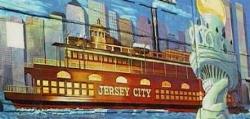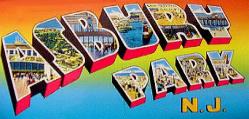Advertise Online
–
SEO - Search Engine Optimization - Search Engine Marketing - SEM
– Domains For Sale
– George Washington Bridge Bike Path and Pedestrian Walkway
– Corona Extra Beer Subliminal Advertising
– Outlaw Motorcycle Gangs
– Pet Care
–
The Tunnel Bar
–
La Cosa Nostra
–
Jersey City Free Books
Images Of The Indians Of New Jersey
The Archeological Society Of New Jersey
Portfolio Of Prints
Series II
Reproduced from original paintings and drawings by Monte Crews and Kenneth Phillips in the collection of the New Jersey State Museum
 ROCK SHELTER SCENE
During the hunting season parties of men, or sometimes whole families would use natural caves and rock shelters as temporary encampments. Some of the meat was cooked and eaten on the spot, but the choice parts were usually smoked and taken home for future use. The meat was divided among the members of the party, with the older men often getting the better pieces.
ROCK SHELTER SCENE
During the hunting season parties of men, or sometimes whole families would use natural caves and rock shelters as temporary encampments. Some of the meat was cooked and eaten on the spot, but the choice parts were usually smoked and taken home for future use. The meat was divided among the members of the party, with the older men often getting the better pieces.
 HUNTING WITH A DISGUISE
Men hunted singly or in groups during stated seasons. Deer, elk, and beer were the most coveted game and sometimes the animals were stalked for hours by hunters wearing disguises. The bow and arrow was the favorite weapon. Bows were made of ash or hickory, and arrows of reeds tipped with stone, bone or antler points. Generally the animal was only wounded, and the hunter trailed his prey until it became exhausted.
HUNTING WITH A DISGUISE
Men hunted singly or in groups during stated seasons. Deer, elk, and beer were the most coveted game and sometimes the animals were stalked for hours by hunters wearing disguises. The bow and arrow was the favorite weapon. Bows were made of ash or hickory, and arrows of reeds tipped with stone, bone or antler points. Generally the animal was only wounded, and the hunter trailed his prey until it became exhausted.
 FISHING WITH A STONE WEIR
In shallow streams and rivers a weir was sometimes used in fishing. This was a V-shaped dam of stones placed with the point heading downstream. The fishermen would start upstream and drag towards the weir a knotted net of Indian hemp, weighted with notched stone sinkers. The fish were driven into the narrow part of the weir or shallow water where they were speared, clubbed or caught with bare hands. Brush nets made by lashing branches together were also used, especially in small creeks. Spears were tipped with long slender stone points or were merely sharpened sticks.
FISHING WITH A STONE WEIR
In shallow streams and rivers a weir was sometimes used in fishing. This was a V-shaped dam of stones placed with the point heading downstream. The fishermen would start upstream and drag towards the weir a knotted net of Indian hemp, weighted with notched stone sinkers. The fish were driven into the narrow part of the weir or shallow water where they were speared, clubbed or caught with bare hands. Brush nets made by lashing branches together were also used, especially in small creeks. Spears were tipped with long slender stone points or were merely sharpened sticks.
 WEAVING BASKETS AND MATS
Baskets and mats were made of twisted fibers and splints. Indian hemp, nettles, rushes and the inner bark of the basswood tree provided the fibers and the ash was used most frequently for splints. Some mats were made of braided cornhusks. Baskets were of various shapes and had special uses -- gathering, winnowing, storage, etc. Mats were used to sleep upon and for the covering of temporary wigwams.
WEAVING BASKETS AND MATS
Baskets and mats were made of twisted fibers and splints. Indian hemp, nettles, rushes and the inner bark of the basswood tree provided the fibers and the ash was used most frequently for splints. Some mats were made of braided cornhusks. Baskets were of various shapes and had special uses -- gathering, winnowing, storage, etc. Mats were used to sleep upon and for the covering of temporary wigwams.
 MAKING WOODEN MASKS
Masks were carved on living trees so that the spirit of the woodlands would be contained therein. Then they were dislodged from the back and painted, usually red and black. Sometimes hair and ornaments were attached. Posts for the interior of the Big House, where cermonies were held, were prepared in a similar manner. These bore faces of the manitos or gods and were prayed to at the Annual Ceremony.
MAKING WOODEN MASKS
Masks were carved on living trees so that the spirit of the woodlands would be contained therein. Then they were dislodged from the back and painted, usually red and black. Sometimes hair and ornaments were attached. Posts for the interior of the Big House, where cermonies were held, were prepared in a similar manner. These bore faces of the manitos or gods and were prayed to at the Annual Ceremony.
 DEPARTURE FROM THE BROTHERTON RESERVATION
The Brotherton Reservation was in Burlington County near the present town of Indian Mills. Thus was one of the earliest reservations in the country and probably the first to be so constituted. It was established in 1758 and the following year nearly one hundred Indian families were placed there in the hope they would become self-supporting. The experiment failed and after many mishaps the Indians moved to New Stockbridge, New York, in 1802. The reservation was sold; part of the proceeds was used to transport them to their new home and part was invested for them in United States securities.
DEPARTURE FROM THE BROTHERTON RESERVATION
The Brotherton Reservation was in Burlington County near the present town of Indian Mills. Thus was one of the earliest reservations in the country and probably the first to be so constituted. It was established in 1758 and the following year nearly one hundred Indian families were placed there in the hope they would become self-supporting. The experiment failed and after many mishaps the Indians moved to New Stockbridge, New York, in 1802. The reservation was sold; part of the proceeds was used to transport them to their new home and part was invested for them in United States securities.
 The Statue of Liberty, Ellis Island, and The Central Railroad Terminal
The Statue of Liberty, Ellis Island, and The Central Railroad Terminal
Visit Liberty State Park!














